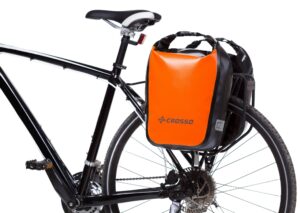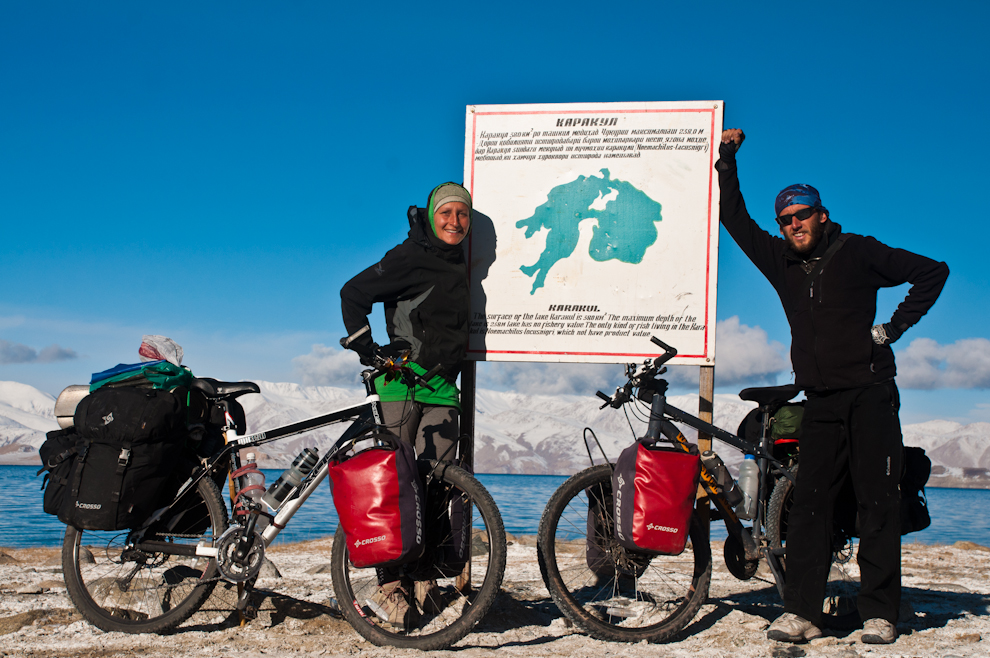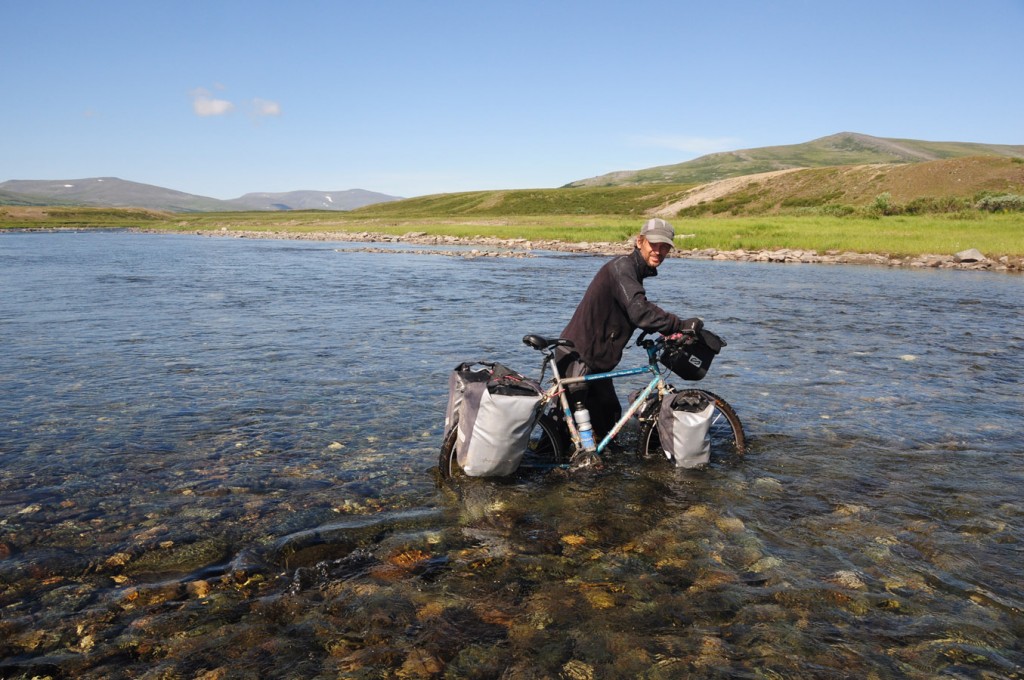Step 1: Search for panniers based on your needs
Short trips and city rides

If you ever take longer trips, you should consider purchasing bigger panniers from one of the series mentioned above. Thanks to the roll closure system our panniers allow you to adjust the capacity depending on your needs.
Longer trips

Bike trips
A magical name for long trips lasting several weeks, usually with full equipment including a tent, foam pad, sleeping bag, camping stove, plates, and other provisions. In theory, you could try packing it all into rear panniers and a transport bag, but that’s not the best idea. The back wheel would be overloaded, the whole bike completely unbalanced, and there would be no room left for any additional supplies, or you may be forced to leave behind a number of necessary items.

The best solution, chosen by experienced globetrotters, is to add two front panniers, which can be mounted on a low rider rack. All the series in our offer comprise a set like that: 2 front panniers + 2 rear panniers + transport bag to be mounted on a rack. All of them combined provide an impressive maximum capacity of over 150 liters! This should meet even the highest expectations…
What are the perks of using front panniers?
You gain an additional capacity of 30 liters, which should accommodate enough food for a couple of days!
The bicycle is much better balanced, and distributing the weight load on both wheels improves their lifespan, which results in less broken spokes, pierced tubes, and worn-out tires! A well-balanced bicycle is also crucial for a safe and comfortable ride!
ATTENTION! Riding a bicycle with a low-rider, i.e. a front rack, is more like riding a light motorcycle than a regular bicycle. You’ll need a day or two to get used to it, but once you do, you’ll never want to go back.

Besides, a bike like this looks more serious! It may sound funny, but it works, it boosts morale, and when you return home, you can show everybody your amazing pictures which could not be taken on an ordinary Sunday ride. Bikes like that are feared even by car drivers from the Middle East or remote Asia, so it’s not just a morale-booster, but also an improvement on our safety on the road! Seriously, that’s a true story!
How many compartments and pockets?
Against all appearances, plenty may be a plague. An abundance of pockets and compartments may be helpful in maintaining order, but you can always fit more in one 20-liter compartment than in four 5-liter ones. Simple math is of no help in this case. But we came up with a solution to this problem as well – every Crosso pannier has a large main compartment, and you can increase their functionality with the X modular system – add an external pocket and/or, for some models, a lid. We offer these solutions for two pannier lines:
– the highly durable Twist X
– the cheaper and lighter Dry X
In the case of the Dry X line, the X modular system has one more advantage – you can stand out! You can mix colors to match your taste and stand out on the trail. Panniers are usually sold in one color, which is most often red or black. Why should we limit ourselves to that? Get creative and go wild!
Step 2: Choose a good fabric
The fabric used for making a pannier has a critical impact on its durability. CORDURA® is without a doubt the best material currently available. Thanks to its astonishing resistance to any mechanical damage and invulnerability to potential tear growth, it is used by the global leading outdoor and military equipment manufacturers. Waterproofness achieved by coating the inner side with a polyester resin is an innovative solution introduced by Crosso in 2007. All the seams are taped at a high temperature with a special band – that’s what makes Twist and Expert panniers highly waterproof, which, as the video below shows, is sometimes essential!
In the production of our panniers we also use fully coated fabrics – Polymar and Plastel. A different type of weave makes this material less damage-resistant than Cordura, but its perfectly smooth PVC coating makes it more water resistant and easy to clean. It is used in our panniers from the Dry series, whose panels are precisely sealed. We also use this fabric for the back (wheel-facing side) of our Cordura panniers.
Watch out for the traps!
Waterproofness is a catchall! Using coated fabrics in the production of a pannier doesn’t make it waterproof! Water gets inside through the seams, zippers and openings in the mounting system. Many manufacturers describe their panniers as waterproof because they are made of waterproof materials. It’s like trying to sell anti-theft doors with no locks!
-
-
During his bike expedition to the Ural Mountains, Dominik Szmajda crossed many rivers Our way of improving the resistance to moist conditions includes advanced methods of sealing fabrics, taped seams, and special methods of closing the panniers. That’s what we do at Crosso – our panniers proved themselves during “the wettest” of the excursions, about which you can read in accounts from all over the globe!
-
Scientists spent many years trying to create Cordura®, a fabric that would meet the expectations of the army, special forces, and top outdoor equipment manufacturers. It is not a low-priced material, which is why some try to replace it with cheaper substitutes with “edgy” names. Don’t let them talk you into buying a pannier made of random materials such as Codura – a cheap Cordura® copycat product with very low resistance to mechanical damage and non-persistent coating! Imagine you must end your dream trip early because your panniers fell apart – it’s just not worth the risk.
Step 3: Check the mounting system
The way panniers are mounted on a rack is essential for ride comfort and safety. Once properly attached, the pannier should be immobile and secured from falling off. Mounting should be quick and easy, because you’re likely to detach the panniers every night and reattach them every morning.
Panniers with the Crosso mounting system are hung on solid steel hooks and pressed to the rack with a tension strap. The system achieved excellent results on tough off-road trails on every continent and during the wildest of trips. The lack of plastic elements significantly improves the durability of our system, and should any serious damage occur, it can be repaired in any conditions – steel can be unbent, plastic breaks for good.
The durability of the Crosso system is incomparably better than any solution based on plastic hooks or clips. The Crosso mounting system can successfully support dead and live loads which are several times bigger than the ones you’ll ever actually use! This durability margin guarantees that even if you drive a loaded bike into a hole or a pannier catches on an obstacle, your panniers will remain undamaged.
Currently, we also offer the Click mounting system with adjustable hook spacing which allows you to use more bicycle racks. You can read more about the differences between these mounting systems in this article.
Step 4: Remember the details
Seams should be even and carefully rimmed. In pannier production we use excellent polyamide threads with high tear strength. Seams are taped using a specialized device. For panniers from the Dry series, we use precise panel welding which ensures full waterproofness.

Buckles and clips – if bending the plastic results in a white discoloration, it means the material is low quality – this element will eventually break and cause a lot of harm. Knowing this, we used unbreakable nylon buckles in our panniers.
Stiffening – professional panniers have a solid board sewn in the inside of the wheel side, which not only facilitates mounting, but also gives 100% guarantee that even an unevenly packed pannier will not get caught on the wheel; the consequences of that are not difficult to imagine. Crosso panniers are stiffened with a 2 mm or 3 mm thick polypropylene board with shape memory. This means that damaging it through conventional methods (unconventional methods include e.g. disc-cutter or combine harvester) is practically impossible. Furthermore, the stiffening is insensitive to water and moisture, which can’t be said about a great deal of currently available “inventions”.
Small things matter – Our panniers are visible from up to 600 meters!
Step 5: Check your wallet
Our goal was to create the world’s top panniers, but not for a price you may expect. When it comes to ensuring durability and functionality, we spared no expense. You can buy cheap panniers that will last no more than one season or pay a fortune for a foreign product. However, you won’t find panniers with a better quality-price ratio than Crosso’s. Don’t forget that all our products have a 24-month warranty! Think it through and set out on this journey with us, and should you have any questions, just contact us – leave a comment on IG/FB or email us!

















